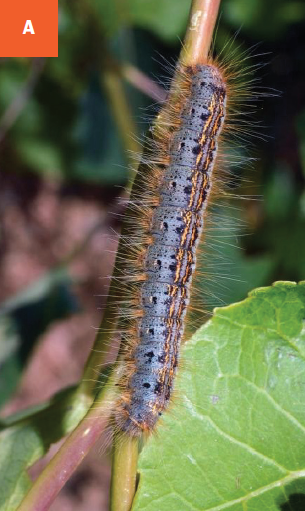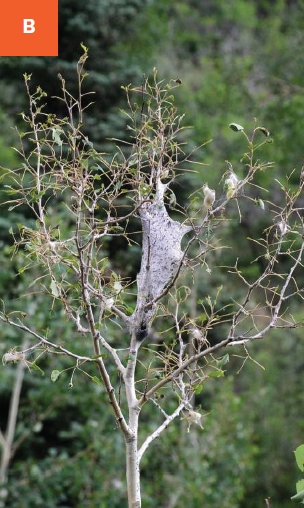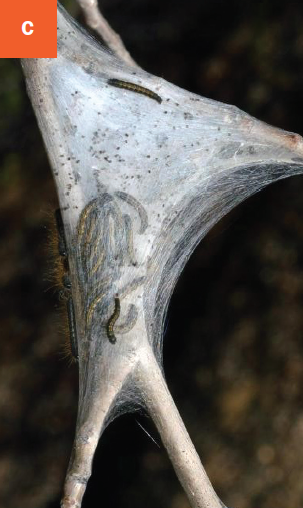Forest Tent Caterpillars
Malacosoma spp.
HOST Poplar, willow, ash, aspen, fruit trees, other hardwoods, currant
DAMAGE/SYMPTOMS The caterpillars feed on leaves and cause defoliation of trees and shrubs.
LIFE CYCLE Forest tent caterpillars overwinter in the egg stage. The caterpillars emerge in the spring and start constructing tents in the crotches of branches. They feed nightly through July, pupate, and emerge as adults in late summer. There is one generation per year.
MANAGEMENT The “tent” or webbed shelter can be cut out of the plant. Several natural enemies, such as parasitic wasps, help control the caterpillars. Since this tent is a resting area, it is easy to capture them during the day. However, wearing gloves is essential because of the irritating hairs on the caterpillar. If necessary, the young caterpillars can be controlled chemically with contact insecticides. Reduced-risk insecticides include those with the active ingredients Bacillus thuringiensis (kurstaki strain) and spinosad. Other contact insecticide options include the broad-spectrum active ingredients carbaryl, permethrin, and cyfluthrin.
A Western tent caterpillar. B Western tent caterpillar damage. C Western tent caterpillar damage. D Western tent caterpillar adult.




